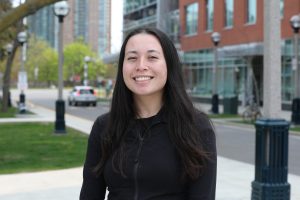Introduction
Welcome to the first steps of creating your own virtual simulation!
Creating a virtual simulation is an exciting experience, but sometimes it can feel a bit overwhelming. This open education resource (OER) will guide you throughout the development process and offer you tools that you can use and/or adapt while creating your virtual gaming simulation (VGS).
Throughout this OER, we will walk you through the unfolding steps of how to design a VGS from the initial idea to dissemination. A VGS example will be use to guide you through the development process to facilitate your knowledge when designing your own simulation. In each chapter, you will learn how to build upon the VGS, incorporating theoretical discourse. The first step is to ignite the idea; followed by the development process: identifying film, editing, and platform options; and then determining dissemination opportunities. This resource will also refer to virtual simulations available within the nursing education community. In addition, throughout each step the OER will highlight strategies on how to incorporate the student voice.
When creating virtual simulations, we strongly recommend collaborating with students. From an educational perspective, the student voice enriches the simulation content, infuses realism of student’s experiences into the storyline, and promotes uptake into curriculum.
From a student perspective, encouraging the student voice advocates student agency, fosters professional development, and promotes sustainable student-educator partnerships. The opportunity can position students to actively use their voice to share their experiences, become change agents within nursing education, and participate as active co-designers in the development process to create student-centred educational resources. As active members, students can develop self-regulation skills when collaborating with the team and take responsibility for their role in the development process. In addition, reciprocal learning occurs where both the student and educator exchange knowledge and experiences to enrich the virtual simulation.
Educator Reflections
Reflecting back to the first virtual gaming simulation that I collaborated on with students always makes me smile. We had a great team and there were six  student leads who were inspiring! Each one of them taught me something new and motivated me to become a more thoughtful educator. They reminded me how essential the student voice is and why we need to invite students on projects as co-designers to advance nursing education. Their wealth of knowledge, commitment to the nursing profession, and living in the moment was transformative.
student leads who were inspiring! Each one of them taught me something new and motivated me to become a more thoughtful educator. They reminded me how essential the student voice is and why we need to invite students on projects as co-designers to advance nursing education. Their wealth of knowledge, commitment to the nursing profession, and living in the moment was transformative.
Student-faculty collaborations can significantly enhance the design of virtual simulations. When incorporating students’ perceptions, addressing their learning needs, and listening to their voice facilitates meaningful change within nursing education. In addition, you are providing them with an opportunity to discover who they want to be as a nurse, which is essential for them when they are developing their professional identity in nursing.
~ Michelle Hughes, Nursing Professor
Insights from the Student Team
The Importance of Collaboration and Mentorship
As students, we are always looking at ways to enhance the curriculum. However, it can be challenging to find opportunities to create change and make a positive impact on our nursing education.
Being co-authors on this OER gave us the opportunity to share our thoughts and feelings with each other about how to advance virtual gaming simulation within the curriculum.
While I personally benefited from receiving mentorship from faculty on this team, I also had the opportunity to share my personal, educational, research, and clinical experiences with other students. Mentorship allowed me to refine my leadership, communication, and interpersonal skills. These are transferrable skills that can be used in future professional and academic roles.
In tandem with skill development, there is an intrinsic value in knowing you have made a difference among your peers and the nursing academic community, which ultimately creates a sustainable cycle of giving back to future students.

Figure 1.1: Sustainable cycle of mentorship in virtual gaming simulations

Being part of the development team on various virtual gaming simulation projects gave me the opportunity to pursue my interest in virtual simulations. I had the opportunity to provide a student perspective during the development process of the simulation to enhance the script, decision points, and gaming elements. I hope that our project will inspire more collaborations between students and faculty in the future.
~ Caitlin Cosgrove, 4th year nursing student

